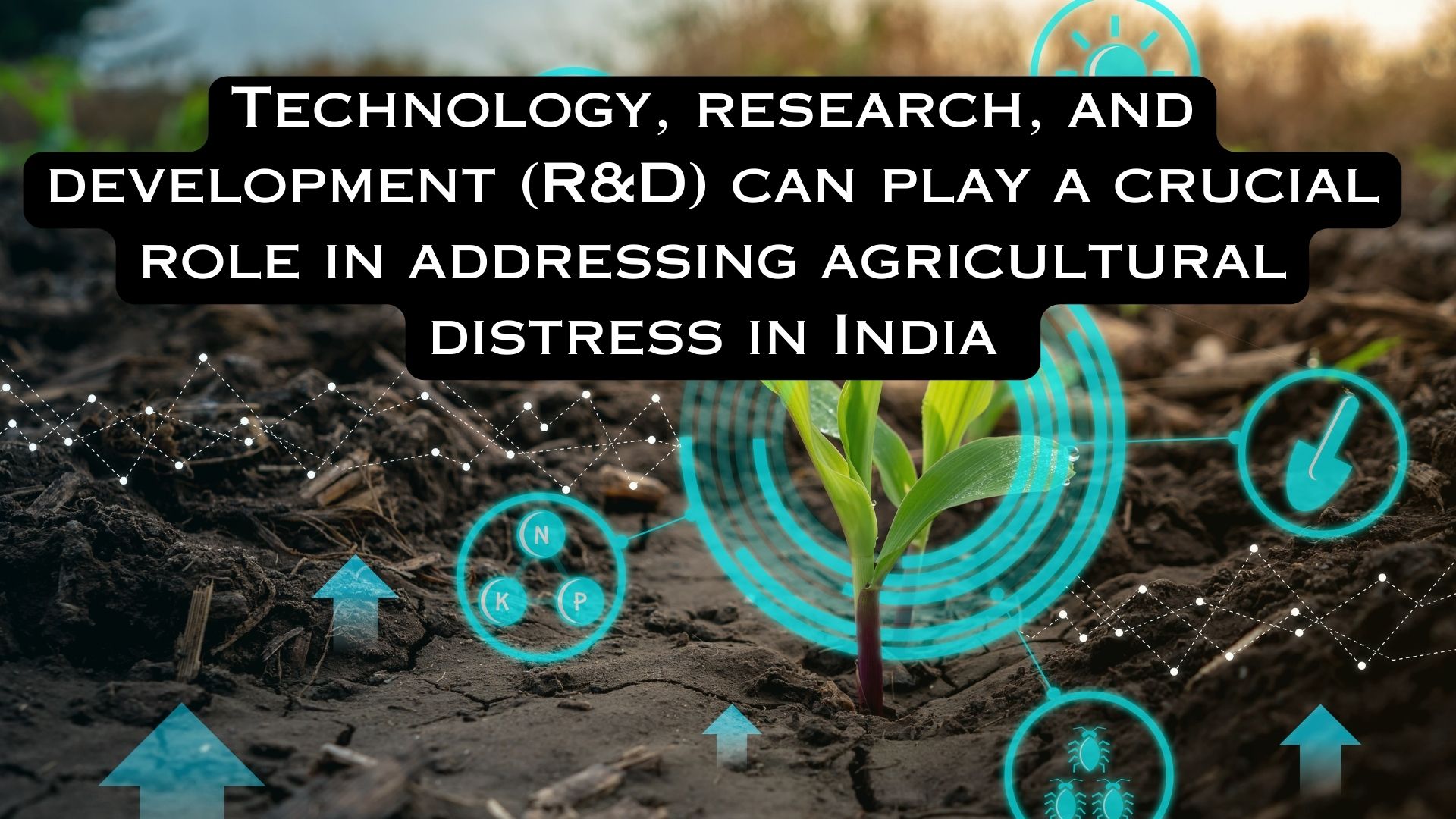Technology, research, and development (R&D) can play a crucial role in addressing agricultural distress in India by enhancing productivity, sustainability, resilience, and profitability across the agricultural value chain. Here are several ways in which technology and R&D can contribute to solving agricultural distress in India:
- Precision Agriculture: Precision agriculture uses advanced technologies such as remote sensing, geographic information systems (GIS), and drones to collect data on soil moisture, nutrient levels, crop health, and weather patterns. By analyzing this data, farmers can make informed decisions about irrigation, fertilization, pest management, and crop rotation, optimizing resource use and maximizing yields.
- Crop Improvement and Biotechnology: R&D in crop improvement and biotechnology can lead to the development of high-yielding, drought-tolerant, pest-resistant, and disease-resistant crop varieties tailored to local agro-climatic conditions. Biotechnological interventions such as genetic engineering, marker-assisted breeding, and tissue culture techniques can accelerate the breeding process and introduce desirable traits into crops, reducing losses and increasing resilience to environmental stressors.
- Climate-Resilient Farming Practices: R&D efforts focus on promoting climate-resilient farming practices that mitigate the impact of climate change on agriculture. This includes the adoption of climate-smart agricultural techniques such as conservation agriculture, agroforestry, crop diversification, water harvesting, and soil conservation measures. By building climate resilience, farmers can cope with erratic weather patterns, reduce crop losses, and maintain productivity under changing climatic conditions.
- ICT Solutions and Digital Agriculture: Information and communication technology (ICT) solutions and digital agriculture platforms provide farmers with access to real-time information, market intelligence, weather forecasts, agricultural advisory services, and financial services. Mobile applications, online marketplaces, and e-commerce platforms connect farmers with buyers, input suppliers, extension workers, and financial institutions, empowering them to make informed decisions, access markets, and improve profitability.
- Post-Harvest Management and Value Addition: R&D efforts focus on improving post-harvest management practices and value addition along the agricultural value chain. This includes the development of innovative storage technologies, cold chain infrastructure, food processing facilities, and packaging solutions to reduce post-harvest losses, enhance shelf life, and add value to agricultural products. Value addition activities such as food processing, agro-processing, and value chain integration create employment opportunities, increase income levels, and contribute to rural development.
- Capacity Building and Extension Services: R&D institutions, agricultural universities, and extension agencies play a critical role in capacity building, training, and technology dissemination among farmers. By conducting research, organizing training programs, and providing extension services, these institutions empower farmers with knowledge, skills, and technologies to adopt best practices, improve productivity, and enhance livelihoods.
- Policy Support and Institutional Reforms: R&D findings and technological innovations inform evidence-based policymaking and institutional reforms aimed at addressing structural constraints, market distortions, and policy gaps in the agricultural sector. Policy interventions such as investment in agricultural infrastructure, irrigation facilities, rural electrification, crop insurance schemes, and price support mechanisms create an enabling environment for technology adoption, market access, and risk management.
In conclusion, by fostering resilient, inclusive, and sustainable agricultural systems that enhance farmer livelihoods, guarantee food security, and support rural and economic development, technology, research, and development have the potential to completely change Indian agriculture. To address agricultural distress and create a more resilient and profitable agricultural sector in India, government, university, industry, and civil society must work together to fully utilise technology and R&D.


No responses yet